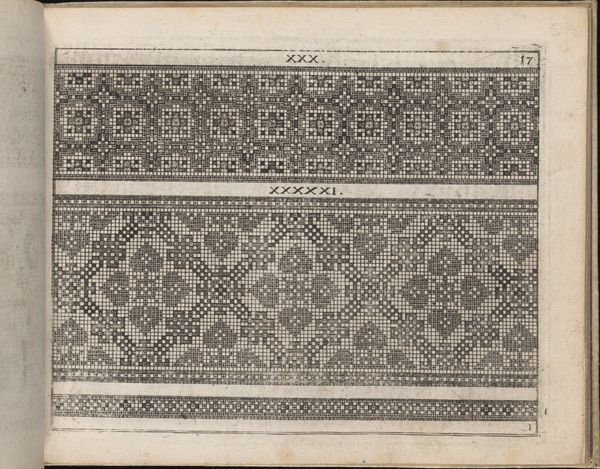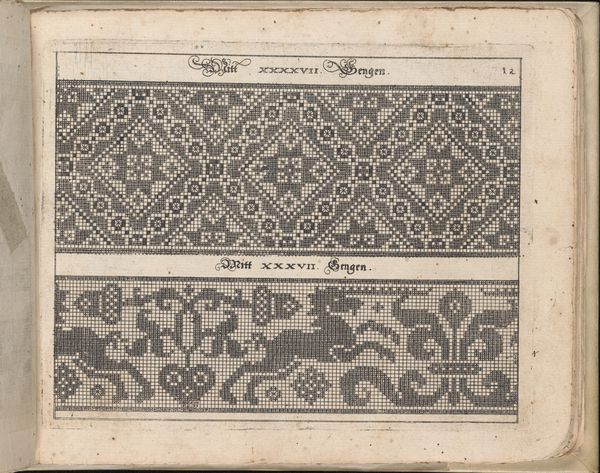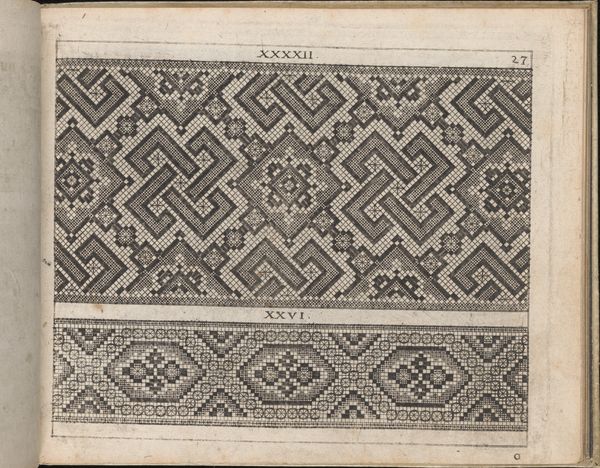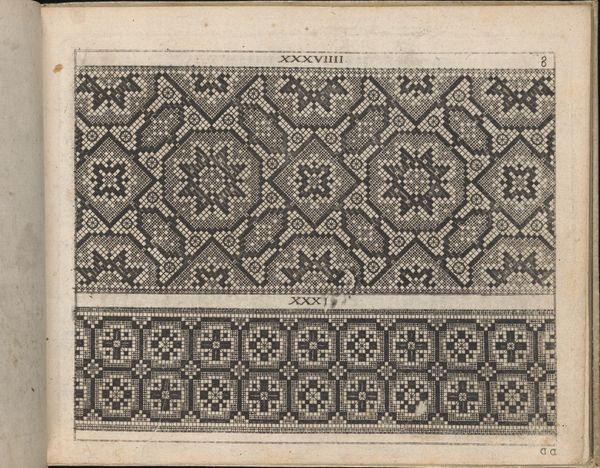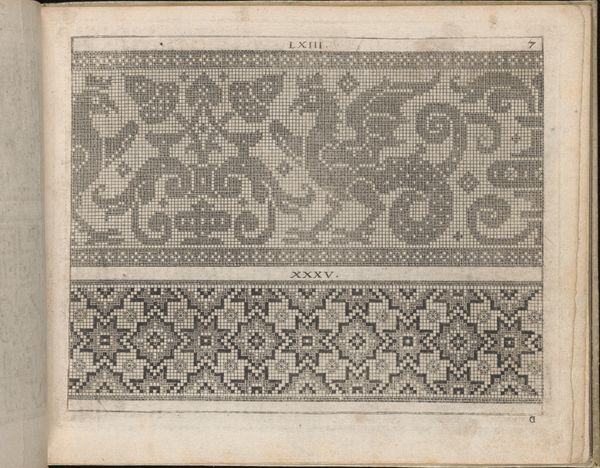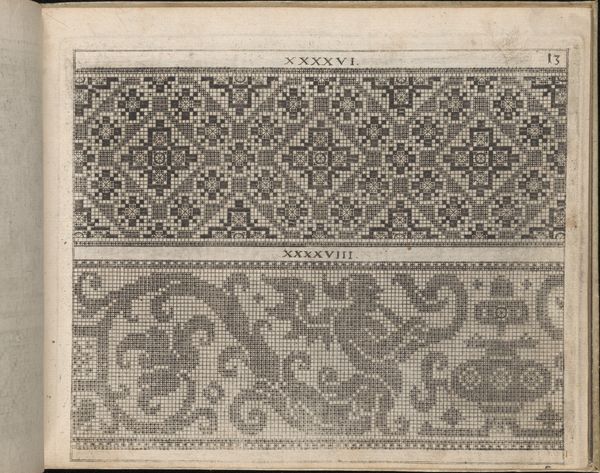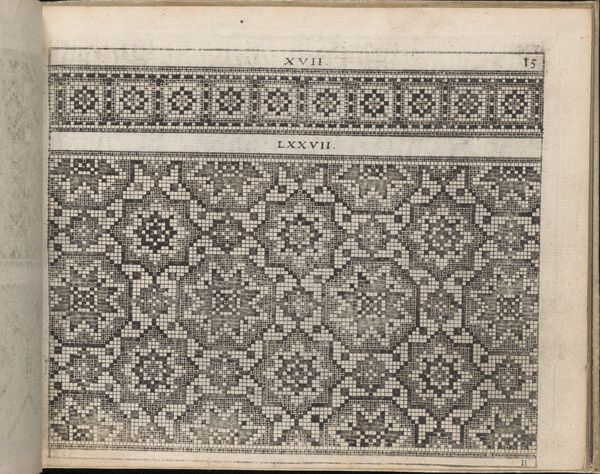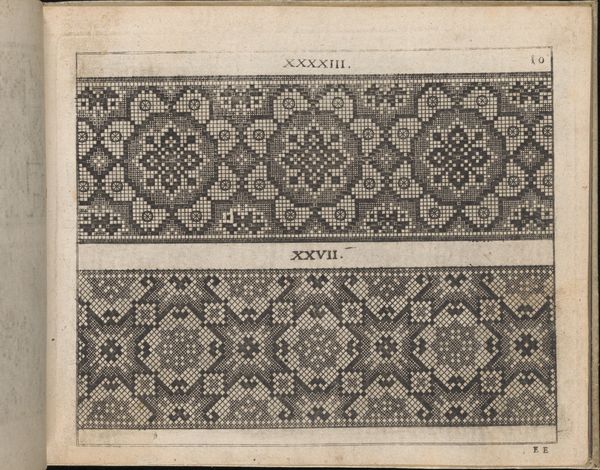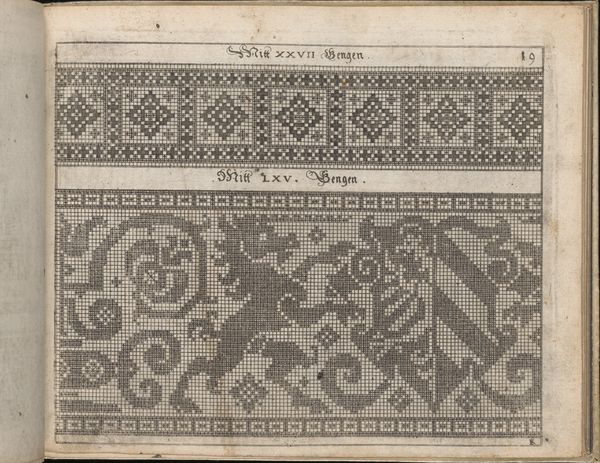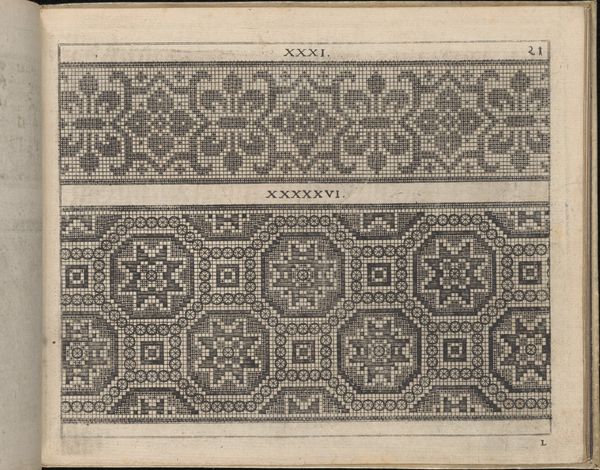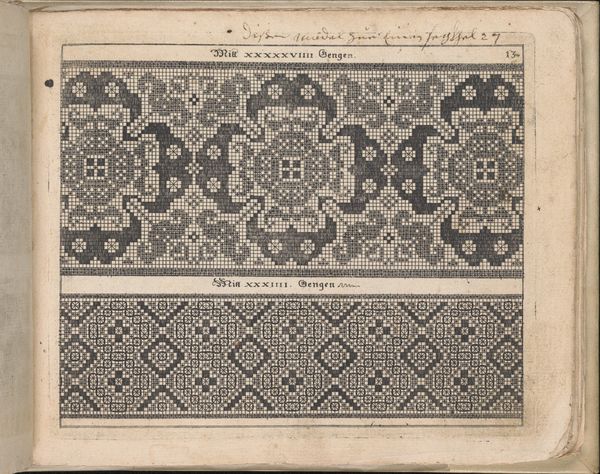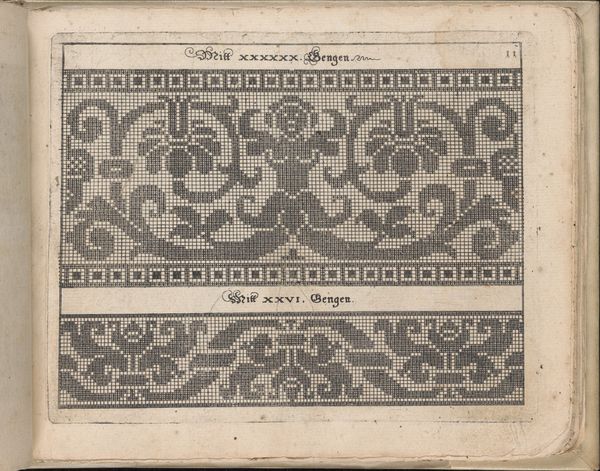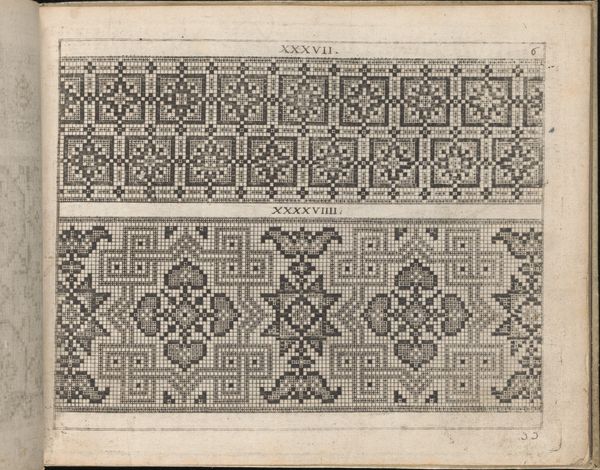
drawing, ornament, print, metal, engraving
#
drawing
#
ornament
#
animal
#
ink paper printed
# print
#
metal
#
book
#
figuration
#
men
#
northern-renaissance
#
engraving
Dimensions: Overall: 5 11/16 x 7 1/16 x 3/4 in. (14.5 x 18 x 1.9 cm)
Copyright: Public Domain
Curator: Looking at this engraving from 1604, titled "Newes Modelbuch in Kupffer (Page 35r)" by Johann Sibmacher, presently held at the Metropolitan Museum of Art. It feels very restrained doesn't it? Editor: It's striking! The graphic, high-contrast patterns have a distinctly modern sensibility even with this antique presentation, even though it's on paper printed with ink and metal. It looks like a page from a book... Curator: Yes, it is a page from a pattern book. These designs would be used as models for embroidery and other needlework. The social impact of these kinds of model books was huge, creating an opportunity for early examples of intellectual copyright issues, a means of exchange and artistic modification. Editor: Looking at the designs themselves, I see repetitive geometric forms that provide almost abstract forms at the top and representational forms below, including the animal. Are these animals based on a popular emblem, or specific bestiary? There is also that suggestion of menswear included, too. Curator: Pattern books would take from classical, popular, and religious iconography and provide these designs to largely female domestic creators, offering both meditative acts of creation, the reinforcement of domestic roles in society, but even the subversive and active use of female production and creativity as political force. These pattern books were frequently used to express allegiance. Editor: I wonder about the act of meticulously reproducing these patterns with thread. The labor-intensive process transforms these abstract grids into something tangible. This process, of course, reinforces domestic ideology. I imagine it as a form of quiet resistance for early-modern women in this Northern-Renaissance setting. Curator: Precisely, in the public realm, the elite would use needlepoint and creation to express their power; domestically these actions allowed those to reflect those same structures. Editor: Reflecting on it now, this single book page gives us insights into the complexities of gender, labour and social aspiration. Curator: Absolutely; it encapsulates both the confines and creative outlets for early modern women through the social politics of artistry.
Comments
No comments
Be the first to comment and join the conversation on the ultimate creative platform.
